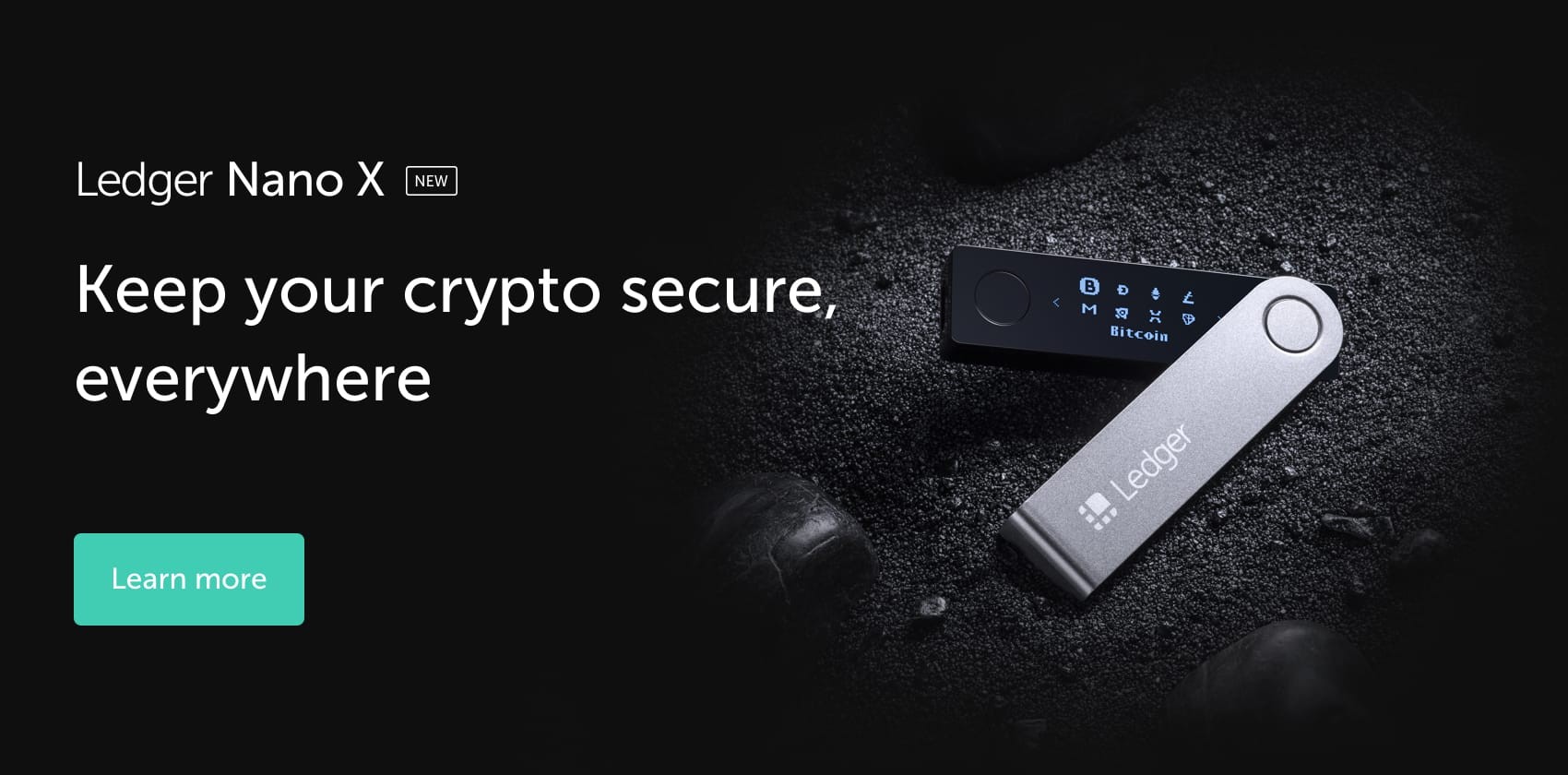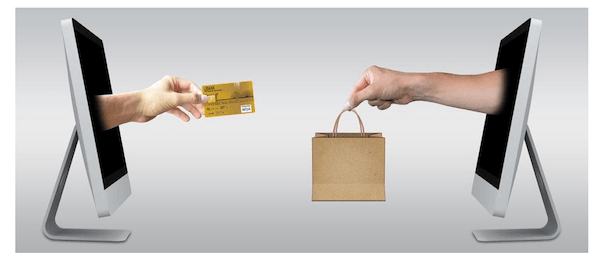This review is NOT sponsored and contains affiliate links.
I’ve been a user of Ledger hardware wallets since 2017, and today I’d like to post my updated review on the Nano X.
In this review, I’d like to introduce the wallet to those who are new to the product, as well as talk about the features that have been added since 2018. Since my main focus is security, I will be also sharing some critical information that will hopefully help you stay safe and avoid getting scammed.
What’s a Ledger Nano X?
The Nano X is a hardware wallet that supports over 1500 different assets, and can store up to 100 of them at the same time. It supports all of the mainstream cryptocurrencies such as Bitcoin, Ethereum, Ripple, Litecoin, Stellar, Monero, as well as many alt coins and their derivatives. Here’s a full list of the supported assets.
On the outside, the Nano X looks like a pen drive with a stainless steel cover. The body of the Nano is made of plastic however, it feels way sturdier than that of the average pen drive. The device features a 30×13 mm screen, and two buttons. It can be connected via USB to your desktop (MacOS or Windows) or via Bluetooth to your phone (iOS 9+ or Android 7+).
Despite its seeming simplicity, the Nano X is an advanced device that features a high-end ST33J2M0 secure element, as well as its own operating system. This makes the device immune to any remote attacks, as well as makes it highly resistant to attacks even in the unfortunate case a hacker gets their hands on the physical device.
Note: I say “highly resistant to attacks” to avoid confusion. If your device gets lost or stolen, it’s critical to restore your funds with the recovery seed and transfer them to a different wallet asap. No matter how secure the device is, you don’t want hackers to possess the chip that has your encrypted keys on it.
What does the Ledger Nano X do?
The device has two functions:
The first one is to store your personal keys. As you probably know by now, all of the coins are out there in the blockchain; your wallet just holds a set of keys that prove your ownership of those coins.
You can obviously create a so-called software wallet on your PC and back up your keys on an USB stick, or even create a cloud wallet and trust a third party to store the keys for you. While not a particularly bad idea for small sums of cryptos, this method is far from safe.
You probably know how vulnerable are computers and smartphones to hacker attacks. A number of keyloggers and trojans remain undetected even by the best antiviruses, and can leak your personal keys to the hacker as soon as they appear on your device.
Here’s where the Nano X comes into play. Its second function is to authorize transactions while keeping the private keys secret. This way, you can operate a cryptocurrency wallet even from an infected computer or smartphone safer, as long as you follow certain guidelines (as detailed in the sections below).
The Nano X has signing authority for transactions. While you cannot initiate transactions straight from the device, you do use it to manually confirm every transaction you do by pushing one of the two physical buttons on the device.
Here’s how it works:
- You start by creating your wallet on the device, and you write down the recovery words somewhere safe.
- Then, you link a software wallet of your choice to your Ledger device. This way, you can use the interface of that software wallet to manage the funds on your Ledger.
- Every time you send crypto to someone, you will have to either confirm or deny the transaction by pressing one of the two buttons on your Nano X. The screen will display the recipient address, which will allow you to verify that you’re sending the funds to the right person.
- If a transaction was initiated by a hacker, you will be able to decline it, and keep your money safe.
Simply put, if a hacker gets to initiate a transaction from your wallet, they won’t be able to complete it without you physically pushing the button on your Ledger.
Note: Even though the Ledger does offer an extra layer of protection against hackers, it’s still a good idea to only connect it to a PC that has a freshly installed operative system on it to prevent MITM attacks. More on that below.
What’s New: Ledger Live
Originally, all Ledger devices only operated with third-party wallets and exchanges. Most of the biggest wallets and sites allow you to link your ledger device to them to add that extra layer of security.
Now, Ledger decided to make life easier for their customers and released their own app that offers a simple interface for storing, buying, selling, swapping, and stacking your crypto. The app is available for Mac OS, Windows, iOS, and Android.
Note: Even though the app is developed by Ledger, two of its key functions are still powered by third parties – the buy/sell option is powered by the Coinify gateway, and the swap option by Changelly.
Make sure to download the app from the official Ledger website to avoid scams.
Common Questions
Pro Tip: You can back up your recovery seed on a device such as a Cryptosteel Capsule Solo or billfodl.
The Nano X is the newest model, and it offers more features, and an overall better user experience compared to that of the Nano S. Both devices are still manufactured and supported by Ledger, with user experience being one of the key differences between the two: Also check on official website!
| Ledger Nano X | Ledger Nano S | |
| Apps installed simultaneously | Up to 100 | Up to 20 |
| Compatible crypto assets | 1,500+ | 1,500+ |
| Compatible wallets | 50+ | 50+ |
| Bluetooth | Yes, can be connected to smartphones | – |
| Screen size | 128 x 64 pixels | 128 x 32 pixels |
| Connector | USB Type-C | USB Type Micro-B |
| Battery | 8 hours | – |
| Price | €119 | €59 |
Ledger Nano X Hacks and Scams – All You Need to Know
Since its release, there have been quite a few attempts to both hack the device itself, as well as trick Ledger users into sharing their private keys in one way or another. None of this was known to the early adopters of the Ledger, and hundreds of users lost their cryptos. If you’re new, you’ll have the privilege of learning from other’s mistakes, and have a more pleasant experience with your Ledger.
Please read this section carefully to get a better understanding on what to, and what to not do:
Getting your own Ledger Nano X
All of the major online stores sell the Nano X. As we saw earlier though, a skilled hacker can potentially tamper with the device, so it’s always a good idea to avoid third parties as much as possible.
I personally bought my Ledgers from their official store, and got it shipped to me via DHL Express.
I know €119 for one Nano X isn’t exactly cheap but for all of you looking to getting your own Ledger, here is the link. Also consider the Cryptosteel Capsule Solo to store your seed words.
There is also a possibility to buy a back up pack that consists of a Ledger Nano X and a Nano S. You get both for a total of 20{aa99edd08dd66036bd4af6c3dbe8af9b4ab31fcc55a521c2956d094a6dcd3a48} discount. You can store the Nano S in your home safe, and take the Nano X with you to make transactions on the go.
In Conclusion
At this point in time, it’s common knowledge that hardware wallets are a must for safe cryptocurrency storage. The more valuable cryptocurrencies become, the more attention they get from all sorts of thieves.
There are several companies that make hardware wallets, and while I don’t doubt that most of them make good and reliable products, I personally lean towards Ledger. Ledger products have a good track record, and the company’s active bounty system helps to improve its products constantly.
Again, this review was not sponsored by Ledger.
Disclaimer: This is not financial advise, I am not a financial advisor, this is for educational purposes only. If you want to invest in cryptocurrency please do your own research and invest at your own risk, 1stMiningRig is never liable for any decisions you make. 1stMiningRig may receive donations or sponsorships in association with certain content creation. 1stMiningRig may receive compensation when affiliate/referral links are used.
Thank you for reading. As always, your comments, suggestions and questions are welcome.
Subscribe and stay tuned for further updates!



